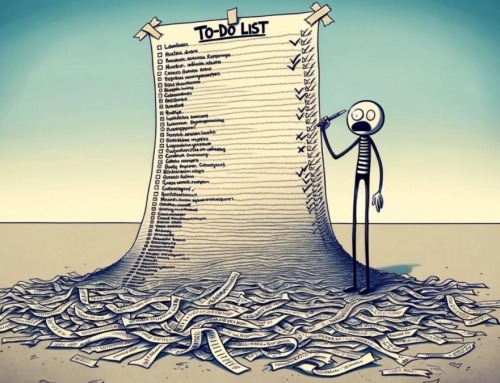When it comes to setting feasible and achievable goals, there’s one key bit of advice that you should consider: set SMART goals.
This acronym is used to describe a particular concept and method for effective goal setting. The concept has been around since 1981, when George T. Doran published a paper in the business journal, Management Review, entitled, “There’s a S.M.A.R.T. way to write management’s goals and objectives.”
But the potential applications of SMART goal setting extend far beyond business and into any area or endeavor where you may want and need to set feasible goals.
Being SMART about your goal setting will give you the best chance of achieving those goals, whether you’re setting goals for business, your education, career, or for your personal and family life. The SMART method is a highly effective tool, and you should be applying it and its individual criteria to all of your goal setting and goal planning.
Let’s start by examining what SMART goals are.
SMART goals definition:
Specific
Setting SMART goals begins by being specific. This brings clarity to the goal and allows you to pinpoint the purpose for the goal, what you want to accomplish, why it is important, and a number of critical factors. A specific goal will typically answer the W’s: what, why, who, where, and when.
In other words, what specifically do you want to accomplish, why is this important and beneficial, who will be involved, where will any work or effort take place, and when will this need to happen?
For example, instead of saying that you need to grow sales next year, you might say the following:
What? We need to increase sales revenue by 10% over our projected revenue for the current year and at our current gross profit margin.
Why? This will allow us to hire additional staff to do more marketing for our business and grow at an even higher rate.
Who? We’ll need our current marketing team, sales staff, and sales manager to drive these results.
Where? They will do this online by sending more marketing and sales emails and arranging more demos, webinars, and sales calls online.
When? Our sales and marketing push must begin by the start of the fourth quarter of the current year, so we can have our pipeline filled going into next year, and so we can pursue our end-goal of a 10% increase in year-over-year sales revenue by the end of next year.
Measurable
The next critical component of a SMART goal is that it must be measurable, not only in terms of overall achievement but in terms of making progress toward attainment.
In our example above, we set the stage for this by being specific about the amount of increased sales revenue that we’d like to achieve: 10% year-over-year growth based on our current gross profit margin.
As long as we have our year-end revenue projection or a final figure for the current year, and as long as we have a mechanism to track our sales revenue for next year, then we can measure our future increase against our goal of 10%.
You can apply the same thing to personal smart goals, such as weight loss or increasing exercise time. For example, you can quantify your current weight or current amount of weekly exercise and set a new goal and measure against these criteria.
However, measurability almost always extends beyond your baseline and your quantified goal because you may also need to quantify and measure intermediary steps or actions that may be required to achieve the smart goals.
For example, if you want to increase your sales revenue by 10%, then you may need to drive a certain number of new sales opportunities into your pipeline next year. And that may in turn require you to send a certain number of marketing emails, make sales calls, and schedule demos or webinars.
Similarly, to lose a certain amount of weight, you may need to quantify a certain number of calories and grams of fat to cut from your diet and then measure your daily and weekly intake against these figures.
So, when you’re setting your goal, you’ll also want to develop a plan that includes the measurable steps and requirements to achieve it.
Attainable
Arguably the most common mistake in goal setting is being unrealistic and setting goals that are unattainable. This is a frequent occurrence in business and is often fed by a mentality that setting aggressive goals is the way to achieve excellence and greater success. But people also have a tendency to set unrealistic and unattainable goals in their personal lives, whether it involves weight loss or working out or other goals such as learning a new language or kicking a bad habit.
Yes, setting a challenging target or a stretch goal can be a way to set higher standards and drive you toward greater success than you might have considered possible. But, when goal setting is overly aggressive and is not driven by history, data, or a realistic assessment of conditions, resources, and capabilities, it can be disastrous and demoralizing. Anyone setting a goal in this fashion is almost assuredly doomed to failure.
An attainable goal must be within your reach. It must be realistic given what is required to accomplish it, and any constraints you may need to overcome.
Don’t set a goal of growing your sales by 25% if you’ve never achieved an increase better than 10%, your target market is trending flat or downward, and there are no new products or resources in place to justify an expectation that your sales will suddenly skyrocket. And don’t set a goal of losing 20 pounds in a single month if you can only make modest changes to your diet and exercise and when it’s only realistic (and healthy) for you to lose a couple pounds each week.
Instead, make sure to evaluate your goals against the attainability criterion, and consider setting smaller or incremental goals that are more manageable and achievable. You always can develop a plan to achieve a smaller goal as part of a longer-term trajectory that will eventually get you to a larger goal. And, the success that you achieve in meeting a more attainable goal can help build the confidence and provide the momentum and resources needed to go further and achieve even bigger smart goals.
Increase your effectiveness with PlanPlus Online.
A productivity system for leaders.

Relevant
When setting a smart goal, you’ll also want to ask yourself some key questions to ensure that it’s relevant.
- Does the goal seem worthwhile and important?
- Is it something that will motivate you or your team, and will it make sense to those involved?
- Does it meet your particular needs or match an overall or long-term strategy that you have in mind?
- Is this the right time to set and pursue this goal, and is it relevant given your current circumstances or environment?
A goal can potentially meet the other SMART criteria, but it may not be relevant.
For example, you may want to set a goal to develop a new product. But is there a need or demand for it among your customers? Does it fit into your overall business strategy? Is now the right time to bring it to market, and will it help you meet your other business goals, such as increasing sales or market share? If the answer to any of these questions is “no,” then you may be setting a goal that is not relevant.
Always use relevance as a litmus test for any proposed goal.
Time-bound
Finally, similar to being specific and measurable, you also need to based your goals on a defined time frame and target date. Deadlines are naturally important for setting expectations, creating a sense of urgency, focusing your efforts, and ensuring accountability.
Establishing due dates and creating time boundaries can help you prioritize your smart goal and stay on track so you don’t get distracted or fail to perform critical tasks along the way.
For example, you can set a SMART goal of launching a new product by the end of the year, which can galvanize a team and allow you to plan and allocate budget and resources to meet your final deadline. And you can break that final goal into shorter-term goals with milestones and due dates to drive all of the key activities that are necessary to achieve success.
Make a habit of defining time frames and target dates for all of your smart goals and related tasks, and you will find that this makes a considerable difference in motivation and urgency. And, by sharing those goals with others for accountability and collaboration, this can be another way to keep you focused and on track for success.






